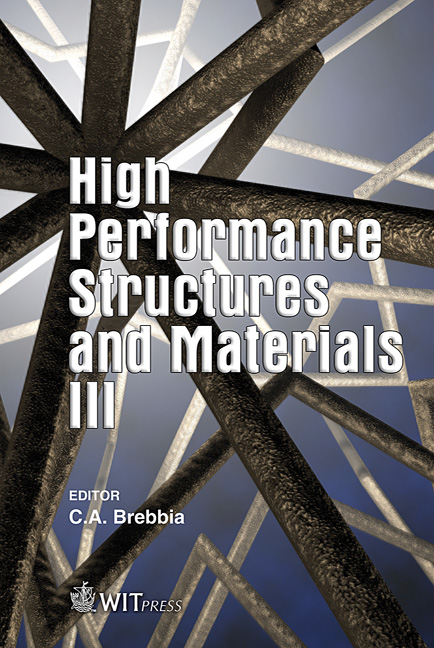X-ray Residual Stress Measurements On Plasma Sprayed Molybdenum Coatings
Price
Free (open access)
Transaction
Volume
85
Pages
7
Published
2006
Size
509 kb
Paper DOI
10.2495/HPSM060341
Copyright
WIT Press
Author(s)
K. Hirukawa, K. Akita, S. Tobe, T. A. Stolarski & S. Ohya
Abstract
Plasma sprayed molybdenum coatings have been applied to friction parts in the automotive field because of their high wear resistance. Clarification concerning the significance of mechanical properties and the residual stress state of the coating is important to improve the performance of the coating. However there are some difficulties in the measurement of mechanical properties of the coating, especially Young’s modulus, because it has complex structures including lamella, pores, micro cracks and so on. Young’s modulus is required to determine the x-ray stress constant for x-ray residual stress measurements. Strain gauges are often used to measure the strains of a component. If glue is applied to thermal spray coatings to attach a strain gauge, it might be that it penetrates into the pores and becomes solidified, hence incorrect strains will be measured. In this research, firstly, Young’s modulus and x-ray stress constant, K, for molybdenum thermal spray coating were determined experimentally by four-point bending tests. The effects of quick-drying glue on strain measurement using a strain gauge were investigated. Secondly, the residual stresses of the coatings were measured using x-ray diffraction. Six types of substrates with a different thermal expansion coefficient (TEC) were prepared. The materials used, in ascending order of TEC, were Super Invar, molybdenum, SCM440, SK5, SUS304 and A6063. Molybdenum powder was sprayed on the substrates in air with various thicknesses. The following results were obtained. (1) The effect of quick-drying glue on the mechanical strain measurement on the sprayed coating was negligible. (2) The Young’s modulus of the coating was lower than that of the commercial molybdenum sheet. (3) Linear strain response against applied mechanical loads was observed in the case of the polished coating surface. (4) The x-ray stress constant K of the coating and the bulk were almost the same. (5) Residual stresses on the coating surfaces were of tensile type on all substrates used in this study. (6) Tensile residual stresses of the coatings increased with the decreased thermal expansion coefficient of substrate. Keywords: x-ray stress measurement, residual stress, plasma spraying, molybdenum coating, thermal expansion coefficient, quick-drying glue, strain response.
Keywords
x-ray stress measurement, residual stress, plasma spraying, molybdenum coating, thermal expansion coefficient, quick-drying glue, strain response.





